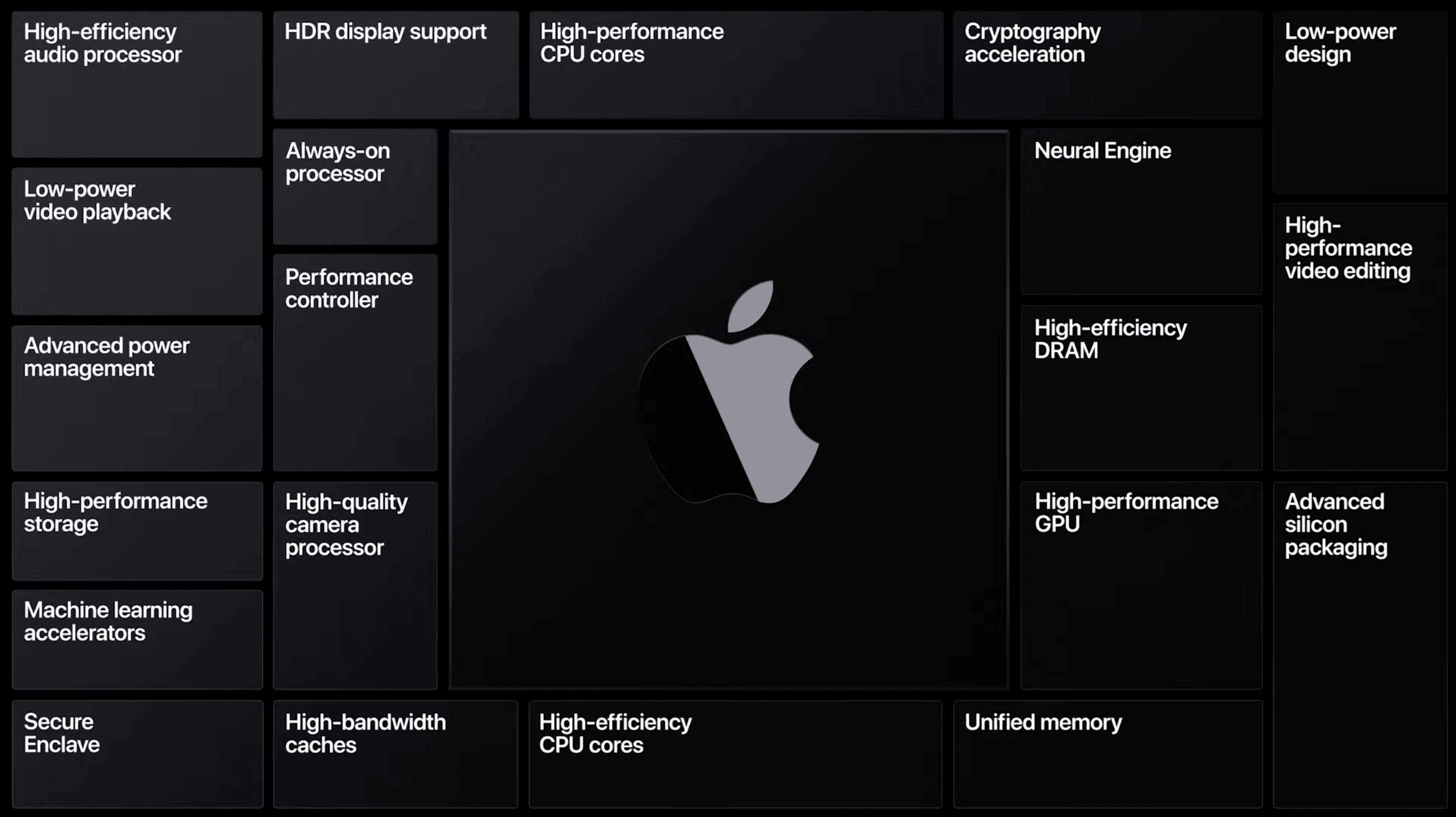
Apple announced at WWDC 2020 that it is transitioning away from Intel processors to its own silicon starting in late 2020. Here are five reasons to be excited about Apple cutting its dependency on Intel and the products it can create as a result.
1. Consistency
Apple released its first A series processor with the original iPad in 2010. Since then, it has released a new numbered version every year, on schedule, with significant increases in performance each time. In comparison, progress at Intel has remained relatively stagnant. When it comes to designing and manufacturing processors, improvements are driven by increased precision in the measurement and etching of lithography instruments. While other businesses like Samsung have accelerated in their progress, Intel has had issues reducing the size of its manufacturing process since it moved to 14 nanometers in 2014 and only recently started increasing core counts because of pressure from AMD.
2. Performance
If the leaked Geekbench 5 scores of the A14 in the iPhone 12 are real, then Apple will surpass Intel’s best desktop processor in single-core performance on a phone this year. The A14 is a 6-core processor with 2 performance and 4 efficiency cores running at 3.1 GHz. The leaked scores put it at 1658 single and 4612 multi-core. In comparison, Intel’s flagship I9 10900K 10-core processor scores 1417 single and 10924 multi-core. The first Apple Silicon Macs are rumored to ship on 12-core variants of the A14 with 8 performance and 4 efficiency cores which should make multi-core performance highly competitive.
Benchmarks, of course, aren’t perfect indicators of real-world performance. To get a better sense we can look at comparisons of two recently released Apple products, the 2020 iPad Pro and 13” MacBook Pro, and see how they compare in various tasks, such as 4K video exporting. From the videos I’ve seen, the A12Z in the iPad Pro more than holds its own and is a variant of the A12 in the iPhone XR, XS, and XS Max released in 2018. The A14 has roughly 50% more single-core performance and the Mac variant will have twice as many performance cores.

3. Thermals and Battery
The biggest advantage Apple Silicon might have over Intel is performance per watt. If we compare the 2020 iPad Pro and 13” MacBook Pro again, they’re both expected to get roughly 10 hours of general use out of their batteries. However, the iPad Pro does it with a 36.71 watt-hour battery while the MacBook Pro uses a 58 watt-hour battery. The iPad Pro also manages to run relatively cool and does it without a fan. A MacBook Pro that doesn’t burn my lap and fingertips while under load would be a dream come true. Imagine running Docker or building Nokogiri without the laptop sounding like an airplane taking off!
4. iPhone and iPad Apps
Apple Silicon Macs will be able to natively run iPhone and iPad apps. The App Store has close to two million applications in it. Granted, there aren’t many that are of high quality, and they’re optimized for touch, but I’d love to have the option. Simply having access to the Audible app on Mac would make me happy. And for digital product creators, a whole new set of possibilities opens up as phones and laptops become simply different form factors, rather than competing platforms that are often at odds with each other.

5. Hardware Features and New Designs
There is little doubt that Apple will be doing the most it can to sell folks on the transition when it reveals its new lineup of Apple Silicon Macs. The new processors reduce Apple’s production costs, make slimmer devices possible, and contain custom processing for things such as cameras. If there’s a time for new hardware features or new hardware designs, it’s now. Will we finally get Macs with touch screens? The Big Sur interface changes hint that we might. Will we see features pulled from the latest iOS devices like 120hz screens, higher quality cameras, and Face ID? I hope so.
Conclusion: Better Products Faster
Apple delivers its best products when it can provide deep integration of the hardware and software. The ability to control so much of the physical device design along with the operating system is largely what enables Apple to provide a seamless, coherent experience and sets iOS and iPadOS devices apart from the competition.
Moving to in-house silicon will let Apple exert more control over not only the finished product but also over the supply chain logistics and release planning. For example, coordinating chip updates with product launches is now more possible. This all adds up to a situation where we should see better products faster. That makes this an exciting time as consumers and as developers using Apple products to ship production code for our clients.
Loved the article? Hated it? Didn’t even read it?
We’d love to hear from you.




I think this is a wonderfully concise and excellent presentation of the reasons why I’m excited about Apple Silicon on Macs. I’m grateful to have read it and I’ll keep it for reference going forward.